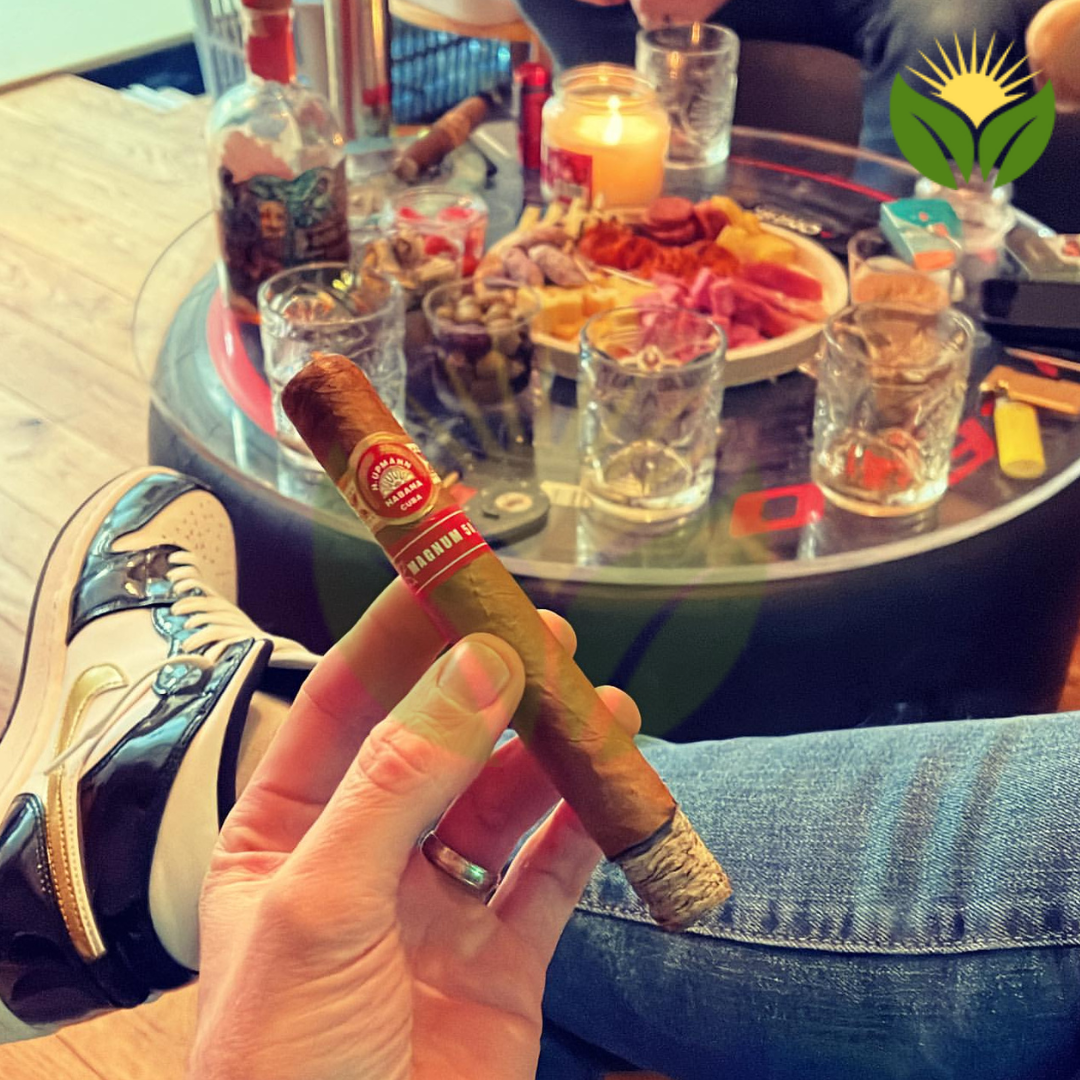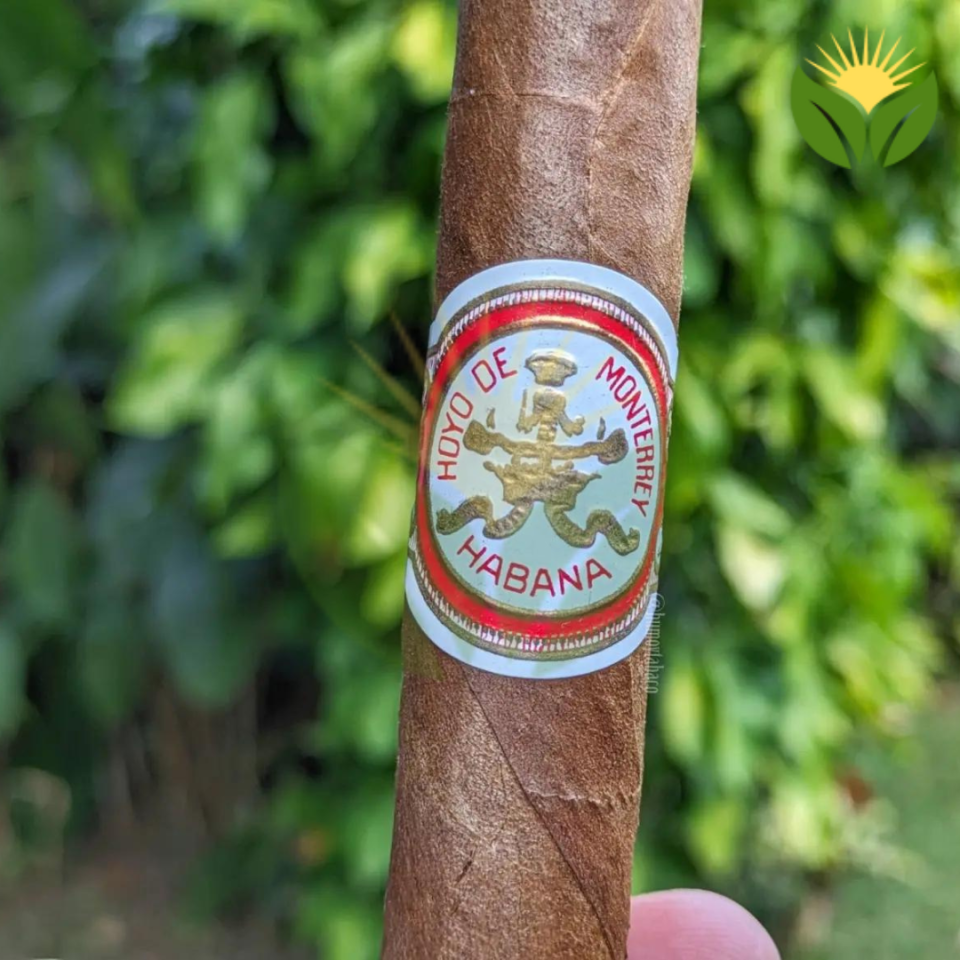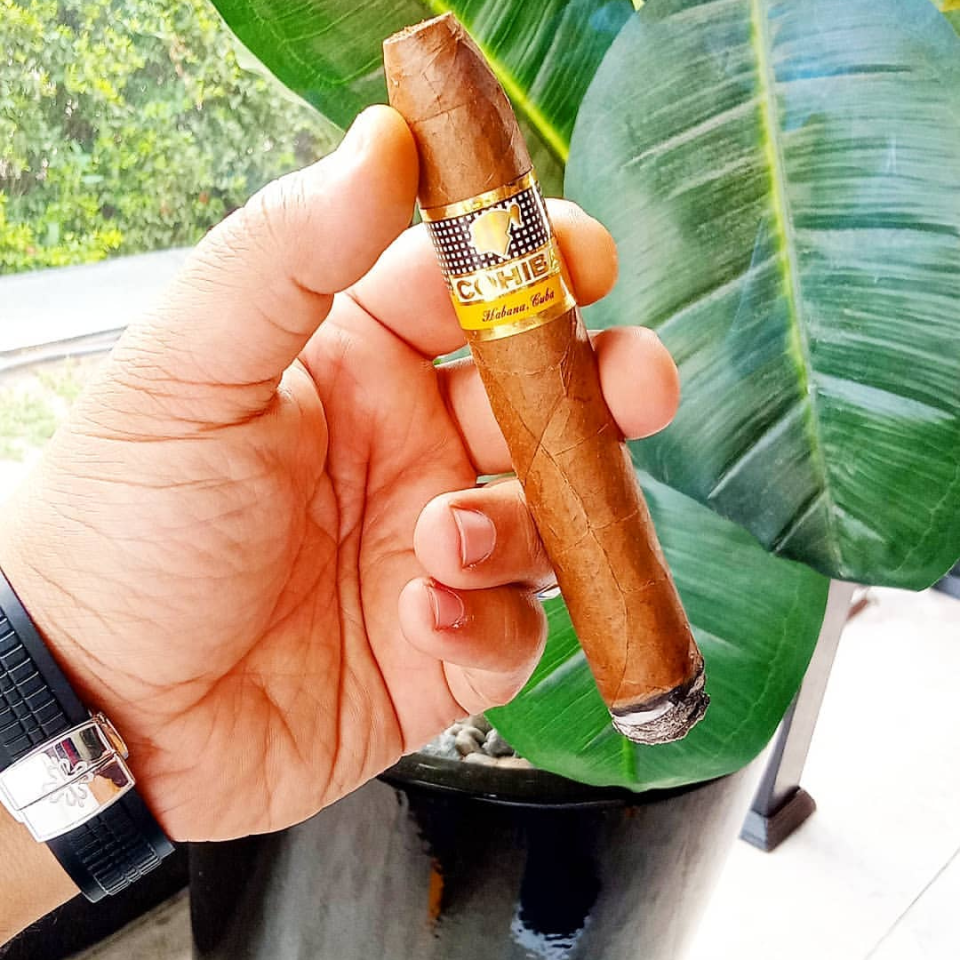From Plantation to Perfection – The Story of Cuban Cigars
Welcome to our comprehensive guide about Plantation Perfection Story Cuban cigars. In this article, we’ll explore everything you need to know about Plantation Perfection Story Cuban cigars, from selection and storage to appreciation and enjoyment. Whether you’re a seasoned aficionado or new to the world of Plantation Perfection Story Cuban cigars, this guide provides valuable insights and expert knowledge.
Table of Contents
- Introduction to Plantation Perfection Story Cuban cigars
- History and Heritage
- How to Select Plantation Perfection Story Cuban cigars
- Storage and Aging
- Enjoying Your Plantation Perfection Story Cuban cigars
- Frequently Asked Questions
Many cigar aficionados around the world hold Cuban cigars in high regard for their exceptional quality and rich history. The journey of a Cuban cigar, from seed to smoke, is a meticulous process that spans centuries of tradition and expertise. Want to research deeper into the fascinating world of Cuban cigars? Check out our Cuban Cigars Guide – Cohiba, Upmann & Co for a comprehensive look into the heritage, cultivation, and craftsmanship behind these iconic cigars.
The Golden Age of Plantation for Plantation Perfection Story Cuban cigars
The Rise of Tobacco Growing in Cuba
To truly understand the excellence of Cuban cigars, one must examine into the rich history of tobacco cultivation on the island. The rise of tobacco growing in Cuba dates back to the early days of colonization when Spanish settlers recognized the ideal climate and soil conditions for cultivating high-quality tobacco plants. This marked the beginning of a legacy that would eventually lead to Cuba becoming synonymous with the finest cigars in the world.
Techniques and Traditions of Cultivation
Plantation owners in Cuba have always taken great pride in preserving the traditional techniques of tobacco cultivation that have been passed down through generations. From selecting the finest tobacco seeds to hand-rolling cigars with precision, every step of the process is a testament to the dedication and expertise of Cuban cigar makers. These techniques have stood the test of time and continue to be celebrated for producing some of the most sought-after cigars on the market.
It is worth noting that Cuban cigars are still primarily hand-rolled, a practice that requires skill and artistry to ensure each cigar meets the highest standards of quality. The cultivation of tobacco in Cuba is a true art form, with every aspect of the process meticulously managed to produce cigars that are unrivaled in flavor and complexity.
The Craftsmanship of Cigar Making for Plantation Perfection Story Cuban cigars
While Cuban cigars have a longstanding reputation for being among the best in the world, their quality is more than just a result of tradition. The craftsmanship and skill that go into making these prized cigars play a significant role in their superior flavor and aroma. For those interested in delving deeper into the history and art of Cuban cigars, a must-read book is Habanos: The Story of the Havana Cigar: Stout, Nancy, which provides valuable insight into this timeless tradition.
The Art of the Torcedores
One of the key aspects of cigar making lies in the hands of the torcedores, the skilled artisans who meticulously craft each cigar. From selecting the best leaves to carefully rolling and shaping the cigar, their expertise ensures a consistent and flawless product that cigar enthusiasts worldwide have come to cherish.
Selection and Blending of Tobacco Leaves
To create the perfect blend, master blenders meticulously select tobacco leaves from different regions and crops, each contributing unique flavors and aromas to the final product. The art of blending requires a deep understanding of the characteristics of each leaf and the ability to combine them harmoniously to achieve the desired taste profile.
Leaves undergo a rigorous sorting process, where only the finest leaves make the cut. The blenders’ expertise lies in their ability to balance different varieties of tobacco, taking into account factors such as flavor strength, aroma, and burning qualities. This meticulous selection and blending process is what sets Cuban cigars apart and ensures a consistently exceptional smoking experience.
From Local Markets to Global Fame for Plantation Perfection Story Cuban cigars
The Branding and Marketing of Cuban Cigars
Many decades ago, Cuban cigars made their mark in local markets with their superior quality and undeniable flavor. This reputation was further solidified through strategic branding and marketing efforts that emphasized the exclusivity and luxury of Cuban cigars. The iconic labels and packaging, along with targeted advertising campaigns, played a significant role in creating a desirable image for Cuban cigars both locally and abroad.
Challenges and Triumphs in the International Arena
To expand their reach and establish a global presence, Cuban cigar manufacturers faced various challenges in the international arena. From navigating complex trade agreements to competing with other cigar-producing countries, the journey to international fame was not without its trials. However, through perseverance and a steadfast commitment to quality, Cuban cigars eventually triumphed in capturing the hearts of aficionados worldwide.
Arena
Cuban cigar makers had to navigate the intricate web of international trade regulations and agreements, often facing restrictions and embargoes that hindered their global presence. Despite these challenges, the allure of Cuban cigars prevailed, with demand continuing to soar in international markets. By staying true to their traditions and expertise, Cuban cigar manufacturers were able to overcome these obstacles and thrive on the global stage.
The Modern Era and the Future of Cuban Cigars for Plantation Perfection Story Cuban cigars
Innovations in Production and Distribution
Production of Cuban cigars has seen a transformation in the modern era with the introduction of state-of-the-art technology and techniques. From the traditional hand-rolling methods to automated processes, Cuban cigar manufacturers have embraced innovations to meet the increasing global demand for their products. In terms of distribution, the rise of e-commerce platforms has made it easier for enthusiasts worldwide to access authentic Cuban cigars with just a click of a button.
The Role of Regulations and Global Politics
Role of Regulations and Global Politics
Cuban cigars have long been subject to stringent regulations and restrictions due to global politics. The embargo imposed by the United States has significantly impacted the export and availability of Cuban cigars in the American market. However, recent diplomatic efforts have seen some relaxation in these regulations, offering hope for a more open market for Cuban cigar enthusiasts around the world.
Final Words for Plantation Perfection Story Cuban cigars
Considering all points discussed, the journey from plantation to perfection of Cuban cigars is a testament to the rich history and cultural significance of this iconic product. From the meticulous cultivation of tobacco in the fields to the expert craftsmanship in rolling and aging the cigars, every step in the process contributes to the exceptional quality that Cuban cigars are known for. The legacy of brands like Hoyo de Monterrey, detailed in The History of Cuban Hoyo de Monterrey Cigars, serves as a reminder of the dedication and skill required to produce some of the finest cigars in the world. Cuban cigars are not just products; they are a reflection of centuries-old traditions and a symbol of excellence in the art of cigar-making.
FAQ for Plantation Perfection Story Cuban cigars
Q: What is the history of Cuban cigars?
A: Cuban cigars have a rich history dating back to the 15th century when indigenous tribes in Cuba were already rolling and smoking dried tobacco leaves. The production of Cuban cigars as we know them today began in the 18th century, with Cuba becoming the premier location for cigar production due to its ideal climate and soil conditions.
Q: What makes Cuban cigars unique?
A: Cuban cigars are renowned for their exceptional quality and flavor due to several factors. The tobacco plants used in Cuban cigars are exclusively grown in Cuba from Cuban seeds, giving them a distinct flavor profile. Additionally, the expertise and skill of Cuban cigar rollers, combined with traditional production methods, contribute to the unique and unparalleled quality of Cuban cigars.
Q: How are Cuban cigars made?
A: The production of Cuban cigars is a meticulous and labor-intensive process that requires a high level of skill and expertise. It begins with the planting of tobacco seeds in Cuban soil, followed by careful cultivation and harvesting of the tobacco leaves. The leaves then undergo a fermentation process before being sorted and selected for rolling. Cuban cigars are typically rolled by hand, with the filler, binder, and wrapper leaves skillfully assembled to create the final product. After rolling, the cigars are aged for a period of time to enhance their flavor before being distributed to markets worldwide.
Summary for Plantation Perfection Story Cuban cigars
This article about Plantation Perfection Story Cuban cigars explores the essential aspects that every cigar enthusiast should know. Whether you’re new to Plantation Perfection Story Cuban cigars or a seasoned aficionado, understanding these key points will enhance your appreciation of authentic Cuban cigars.
Related Premium Cuban Cigars for Plantation Perfection Story Cuban cigars
If you’re interested in Plantation Perfection Story Cuban cigars, explore these exceptional Cuban cigars from our collection:
- Partagas Serie D No.4 – Premium authentic Cuban cigars
- Ramon Allones Specially Selected – Premium authentic Cuban cigars
- H Upmann Half Corona – Premium authentic Cuban cigars
Learn More About Cuban Cigars for Plantation Perfection Story Cuban cigars
Expand your knowledge about Plantation Perfection Story Cuban cigars and Cuban cigar culture:
- Read expert reviews at Cigar Aficionado
- Discover cigar history on Wikipedia
- Get industry insights from Halfwheel
Shop Authentic Cuban Cigars for Plantation Perfection Story Cuban cigars
Ready to experience the excellence of Plantation Perfection Story Cuban cigars? Browse our complete collection of authentic Cuban cigars with guaranteed authenticity, optimal storage, and worldwide shipping. Whether you’re seeking specific brands mentioned in this article about Plantation Perfection Story Cuban cigars or exploring new options, we’re your trusted source for genuine Cuban cigars online.
Explore Our Premium Plantation Perfection Story Cuban cigars Collection
Ready to experience authentic Plantation Perfection Story Cuban cigars? Browse our carefully curated selection:
- Cohiba Behike 52 – Premium authentic Cuban cigars
- Cohiba Sublimes “Limited Edition 2004” VINTAGE – Premium authentic Cuban cigars
- Quai D’orsay Imperiales – Premium authentic Cuban cigars
- H Upmann No 2 – Premium authentic Cuban cigars
- Cohiba Siglo III – Premium authentic Cuban cigars
Related Articles About Plantation Perfection Story Cuban cigars
Continue learning about Plantation Perfection Story Cuban cigars with these informative articles:
- Partagas Cigars – Prices, Sizes, and Everything You Need to Know
- Montecristo Puro and Montecriste Cigars – Alternatives to the Original Brand
- The Significance of Denominaciones de Origen in Cuban Cigar History
Expert Resources on Plantation Perfection Story Cuban cigars
Learn more about Plantation Perfection Story Cuban cigars from these authoritative sources:
- Cigar Aficionado – Expert reviews and ratings
- Wikipedia – History of Cuban cigars
- Halfwheel – Industry news and reviews
Start Your Plantation Perfection Story Cuban cigars Journey Today
Now that you’ve learned about Plantation Perfection Story Cuban cigars, it’s time to experience them yourself. Browse our complete collection of authentic Cuban cigars and discover why Plantation Perfection Story Cuban cigars are treasured by aficionados worldwide. With our guarantee of authenticity, expert curation, and worldwide shipping, your perfect Plantation Perfection Story Cuban cigars experience is just a click away.
Remember: Whether you’re new to Plantation Perfection Story Cuban cigars or a seasoned enthusiast, we’re here to help you find the perfect cigars for your taste and occasion. Don’t hesitate to explore our selection and join the ranks of satisfied customers who have made us their trusted source for authentic Plantation Perfection Story Cuban cigars.






